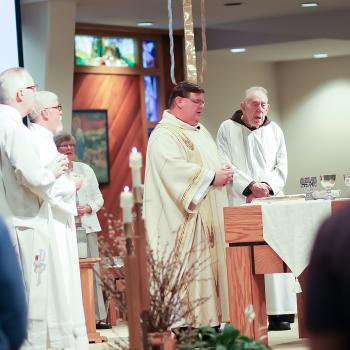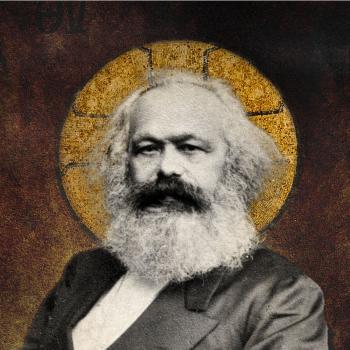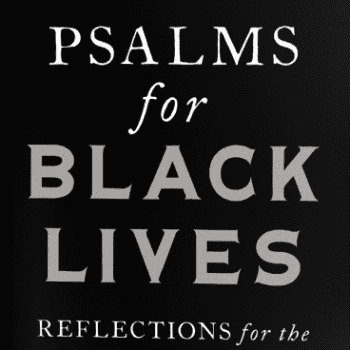In case you missed church last Sunday, here’s a powerful sermon from the Rev. George Anastos, Pastor of First Plymouth Congregational Church in Denver, CO. I was extremely moved by his reflections on Jesus’ humble and radically unconventional entry into Jerusalem, especially as they were followed by a communal bringing forward of coats for the Denver Rescue Mission. As coats piled up on the piano in the middle of the narthex, higher than the last person could even reach, I experienced a kairos moment of being both in that sanctuary and also being on the road to Jerusalem with Jesus, throwing down my coat before him.
Sermon from March 28, 2010, by Reverend George Anastos:
Okay! The newspaper in one hand, the bible in the other. Here we go!
Culminating exactly one week ago, this past year has seen a HUGE debate in Washington regarding healthcare in our nation. What was curious was not just the debate itself, but how many other “hot button” issues got dragged in: last Sunday, as they headed for the vote, black members of congress were verbally abused with demonstrators hurling the “N word” at them; one black member of congress was actually spit upon. An openly gay member of congress received verbal abuse. All because of healthcare. Americans stood on opposite sides of the driveway leading to the U.S. Capitol last week screaming and cursing at each other.
And Jesus rode into his nation’s capitol on an ass.
We also read in the paper that this past week of the roughly usual number of suicide bombers killing themselves . . . and children, women and men, all in the name of God. And so in Afghanistan, in the United States, in Iraq, relatives buried their dead and saw the world through the lens of tears, and made whatever resolutions in their hearts that seemed right to them regarding their own response to this violence, resolutions that they believe will give meaning and purpose to the death of one they loved.
And the crowd threw their coats before Jesus.
Finally, in Boulder, a jury will decide this coming week whether a woman was wrongly, or rightfully, evicted from her rental home last year. At issue was whether the eviction stemmed from her failure to pay rent last spring, or because the landlord was upset because the renter, and I swear I am not making this up, was “kicked out because she wouldn’t take down her Easter decorations, which included the bunny-shaped, sugar-coated marshmallow candies attached to the top of her door.”[1] Yes!
And the religious authorities told Jesus to rebuke his disciples, and he responded that even if the disciples were silent the stones would cry out.
Cry out?
Curiously enough, all of today’s stories, from healthcare to terrorism to evictions to donkey rides, have to do with justice, with visions of society, of right and wrong. All have to do with a peculiar consciousness of a way the world is at present, the way it ought to be at its root and the awareness of the distance between the two. All have to do with contextual circumstances, universal truths and individuals’ responses to them.
What is even more curious is that three of these four storylines will be forgotten within a generation or two at most; three of the four storylines will not endure. Three of the four storylines are specific crises, symptomatic representations of a deeper and perpetually enduring crisis. Only one of the four storylines will still be told year after year, millennium after millennium: that of a backwater prophet riding an ass into his nation’s seat of power.
It is so very curious that the storyline of Jesus of Nazareth is so durable. Here we are in our 21st century contextual world of deciding who gets healthcare, of terrorism, of eviction and homelessness, and a prophet in Israel who died 2,000 years ago rides an ass into our stories . . . stories of another people in another time and another place . . . and his is the storyline that endures. Huh?
Walter Brueggemann, in his book The Prophetic Imagination, says the following of enduring, prophetic acts like Jesus’s: “The task of prophetic ministry is to nurture, nourish and evoke a consciousness and perception alternative to the consciousness and perception of the dominant culture around us. Thus I suggest that prophetic ministry has to do not primarily with addressing specific public crises but with addressing, in season and out of season, the dominant crisis that is enduring and resilient, [that] of having our alternative vocation co-opted and domesticated. . . The alternative consciousness to be nurtured, on the one hand, serves to criticize in dismantling the dominant consciousness. . . . On the other hand, that alternative consciousness to be nurtured serves to energize persons and communities by its promise of another time and situation toward which the community of faith may move.”[2]
It is certainly safe to say that the people of Jesus’ time responded to his entry into Jerusalem in the way that they did not only because his witness worked to dismantle the dominant consciousness of his culture, not only because their religion’s core message of Exodus freedom had been tamed to domesticated imperialism, but also because Jesus incarnated a promise of another time and situation toward which they could move: liberty and justice for all. And, both for people then and people now, that alternative of another time and situation is only appealing if the situation they have at present is in some way, at its very core, inadequate. Reading the newspapers of that day would likely have given us stories of insurgents fighting Roman occupation, of sick people such as lepers being forced to live outside society on reservations, of landowners evicting tenants who then became the homeless poor. And this village prophet rode into the midst of all that and people responded with the cloaks off their back as an affirmation of the offered alternative agenda to the core inadequacy of tame religion and courts of law that serve legality but not justice. The story is told century after century because there is universality in its particularity.
One of the important points that Luke makes in his narrative is that people respond to him the way that they do because he is truly “other;” he is truly alternative from the status quo. Unlike Matthew and Mark, Luke does not include people waving palm branches before Jesus, and that is a deliberate omission. Luke knew that waving palms is what people did for emperors, for those who sat in the seat of power. And in Luke’s theology that is a throne upon which Jesus will never sit, because that is not where hope is engendered. Hope and justice, oddly enough, are not achieved from the top down but from the bottom up. They are achieved from people like those in Jerusalem 2,000 years ago and from people like us today as we offer the coats off our own backs as a way of affirming that at its core society must be just for all and not merely for some. Luke holds up the response of ‘the multitude of disciples’ as the means of hope for the world.
This is why a story of a prophet riding an ass into the center of power of his time has such resonance in our time. That master story occurring in kairos informs our contextual stories in kronos, and in that informing offers us a way to shape our own stories that they may embody the same hope as the master story—hope of compassion, hope of healing, hope of genuine liberty and justice for all.
One of the kairos aspects of today’s gospel story that resounds powerfully for us in our kronos situation is the response of the ‘multitude of disciples.’ Those disciples are the plethora of individuals who have heard the good news preached in their midst and whose very souls responded “Yes.” Those are the individual hearts who in the presence of Jesus had, and have, a sudden vision of how radically different his undomesticated Way is from that of the dominant culture and who respond “Yes.” Those are the disciples who from the ordinariness of their everyday lives, just as they were, took the coats off their backs to say “Yes” to their own affirmation of Christ’s alternative Way. In the midst of rancorous healthcare debates there is hope. In the midst of terrorists murdering for justice there is a Way. In the midst of our homeless neighbors there are coats we throw before them and him—the alternative way of living and loving in his name.
As we sing our next hymn, any in the sanctuary who have brought coats, please bring them forward and lay them on the steps of the chancel. And those who brought more than one, please share with those who did not know we were donating coats today to the homeless via the Denver Rescue Mission. And for all of us may our worship today be one more act of witness, one more step in our journey of following Jesus’s different Way—one that leads to healing for all. Amen.












